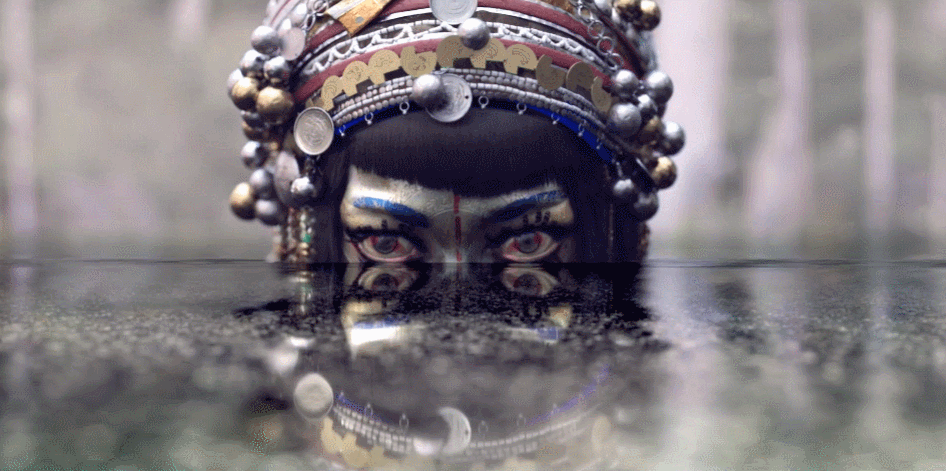
Just this past weekend, many of you will have viewed the long-awaited third season of Love, Death & Robots.
While it hardly has the same sense of awesomeness that the first season had at first glance, the stories this season have maintained a very high standard compared to the generally mediocre second season, especially the David Fincher-directed story "Bad Travelling" and the final story - the just-awarded Oscar-winning Alberto Mielgo, has received numerous positive reviews across the internet.
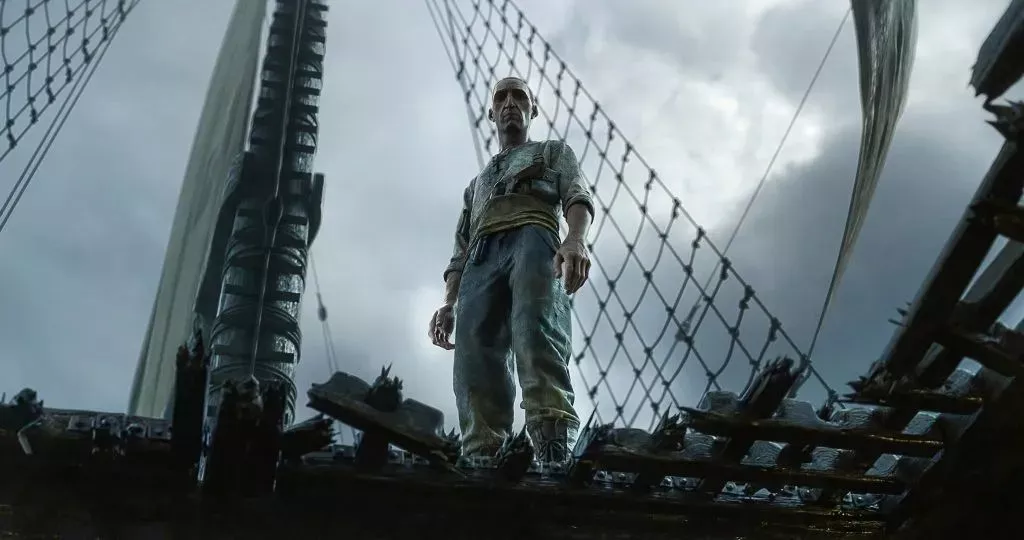
S3E2 The Bad Trip
Love, Death & Robots
The word-of-mouth hit "Bad Trip" and another story in the season, "Swarm", both feature the overall visual design by domestic studio Tian He Yan, which said on Twitter that more than a dozen domestic designers were involved and that they are believed to be releasing the concept designs they worked on soon.

And the most discussed was the finale debut of "Jibaro".
Appearing in the season three trailer was recognized by many as Alberto Mielgo's unique style, having directed the impressive "The Witness" in season one of Love, Death & Robots.
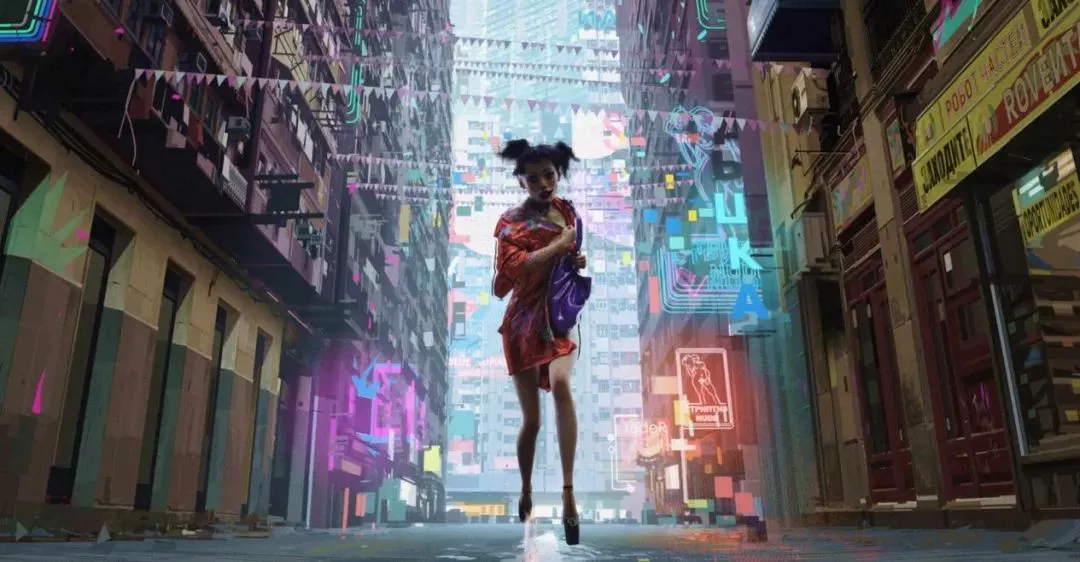
S1E3 The Witness
Love, Death & Robots
Two months ago, Alberto Mielgo also won the 94th Academy Award for Best Animated Short Film for his other intensely personal animated work, "All for Love (The Windshield Wiper)," and even more so for his subsequent new work.
All for Love
The Windshield Wiper
And compared to these two previous efforts from the director, "Jibaro" presents a more screaming story and images while maintaining his personal style.
The next paragraph is a spoiler, so skip it if you haven't seen it
The plot follows an army that marches deep into a beautiful forest and while stationed near a lake encounters a water demon that can compel people with her voice. The water demon is bejeweled and has a delicate dance, but she drives all who covet her mad and to destruction with her screams, and the entire army is wiped out except for one deaf knight who is unaffected.
The banshee, who is curious about the knight, engages in a game of chase with her, thinking that the knight is indifferent to her and develops a strange affection for her. The knight also flirts with the banshee after discovering her treasure and later kills her before she is ready, and then strips the banshee of all her gold and jewels. The banshee's body is pushed down the river and flows back down the waterfall to the lake, also turning the torrent of water into blood staining the entire water. The banshee comes back to life in the middle of the lake, while the knight who drank the banshee's blood with its healing properties regains his hearing, and is eventually avenged by the banshee's screams of pain as it takes his life.
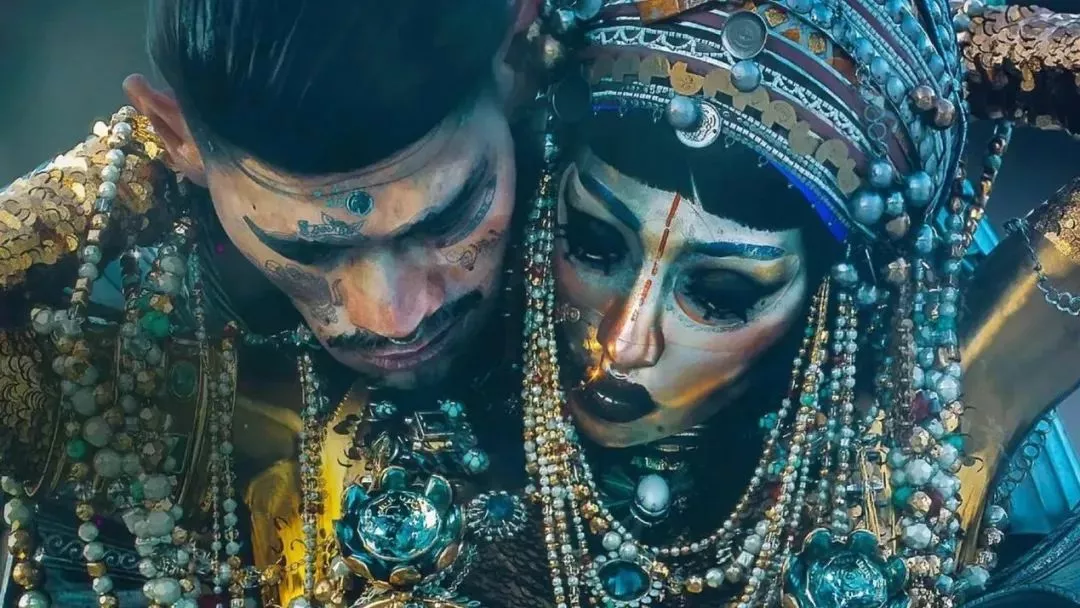
S3E9 "Jibaro "
Love, Death & Robots
The entire story of "Jibaro" is uncomplicated, with not a single line from all the characters, but the animation team led by Alberto Mielgo once again creates an atmosphere that makes it hard to tell the real from the fake, and some even think it could be real scenes and live action cameos.
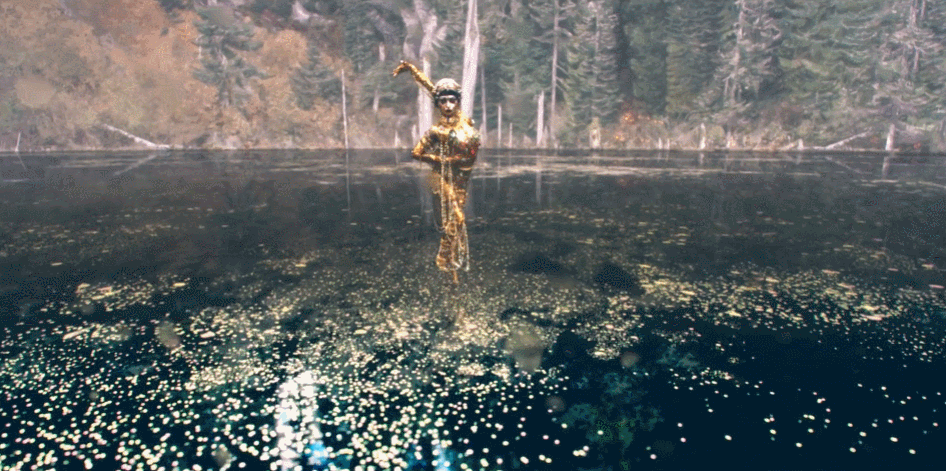
In an interview with media outlet slashfilm Mielgo said the production is essentially a 3D animation, the team used technology to create a complete forest and lit it like they usually do in 3D environments so the whole environment would look very realistic. There is also a lot of 2D in post-production and the characters have a very simplified look, even though they look realistic, it's only because the physics of light are represented correctly in terms of drawing and rendering, it's still much simpler than a hyper-realistic 3D rendering.

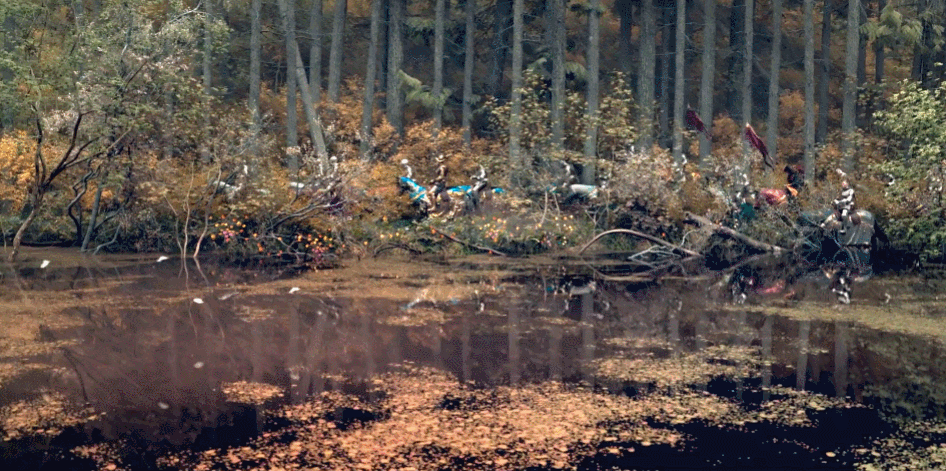
Technically, the film was extremely complex to make, it was just the other details that were really challenging: " Simulating the contact of water and splashes with armor and jewelry while they all move and collide in the water was extremely difficult and challenging. But I wanted to push the technology and the implementation of these visual effects to push this artwork to the extreme". The final animation presentation also lived up to Mielgo's vision.
In the animation the audience can also see the characters whether riding, running or banshee dance movements are very vivid and smooth, and the amazing thing is that these are not using motion capture, but all hand-drawn keyframe animation to achieve. According to Mielgo, the moves in the animation were the result of two weeks of rehearsal by a team led by choreographer Sara Silkins. The animation team recorded the movements from different angles as reference material from which to understand what motivates the characters, how they move, how they dance and how they convey all these feelings through dancing, etc. The final presentation is quite realistic.
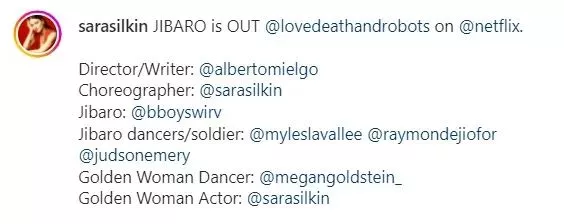
Information about the dance team members as presented by Sara Silkins on her ins
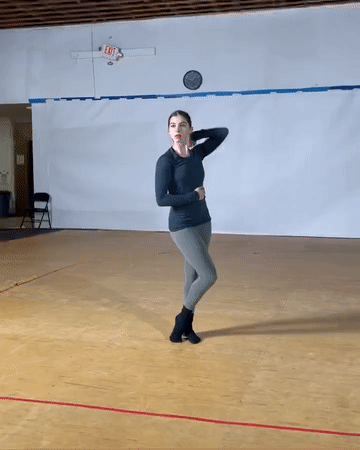
Dancer Megan Goldstein's moves are perfectly recreated in the animation
In terms of art, the trailer's shot of a water demon seducing a human is reminiscent of related themes in classical oil paintings. The theme of water demons seducing men is not uncommon in classical works, with painters such as John William Waterhouse painting works featuring water demons from Greek legends, as well as all such works perhaps inspiring the director's settings.
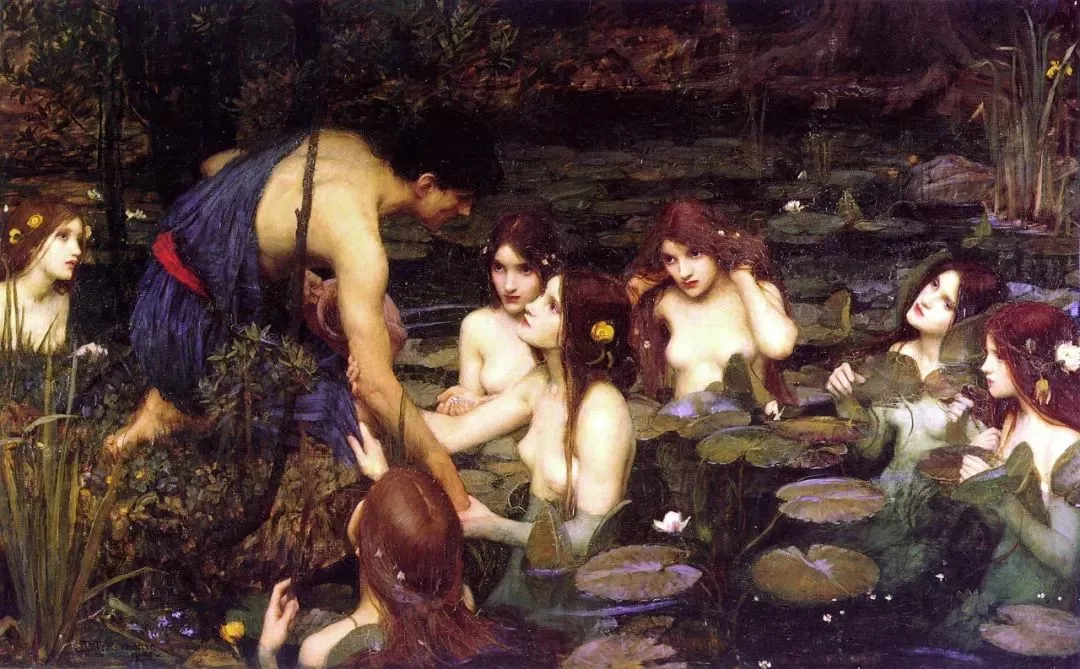
© Sholas and the Water Demon
Outside of the technical and artistic aspects, the thematic expression of Jibaro is a much bigger topic.
In a show as sci-fi oriented as Love, Death & Robots, Jibaro doesn't really have sci-fi elements, but instead is very classical. Ancient and beautiful forests, sirens like the Sirens of Greek legend, and knights covered in medieval armor come together in a fantasy story. Although none of the characters have any lines in the piece, a short film like this that is filled with male and female issues, aggression, plunder and revenge connotations is very discussable in itself.
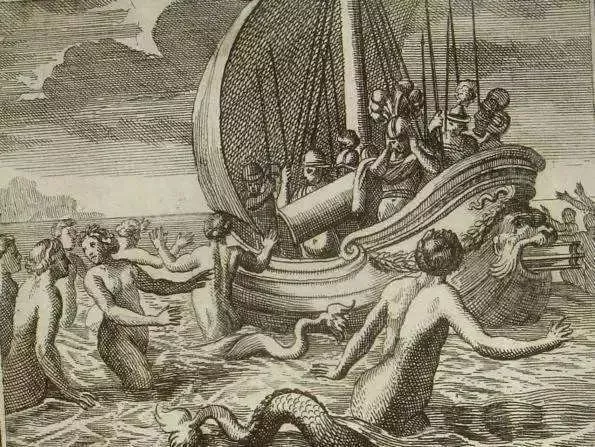
Ancient Greek Mythology 'Sirens', Water Demons and Armored Knights
The title of the work, "Jíbaro", is not a coined word, but has a connotation: Jíbaro refers to the traditional cultivation of the land in Puerto Rico, a name that Puerto Rican workers are proud to call themselves. Puerto Rico had become a Spanish colony during the era of geographical discovery, and the Spanish had plundered Latin American countries such as Puerto Rico of resources such as gold and silver, and had brought disease, war and oppression to the region, and many countries in Latin America remained poor and backward to the present day.
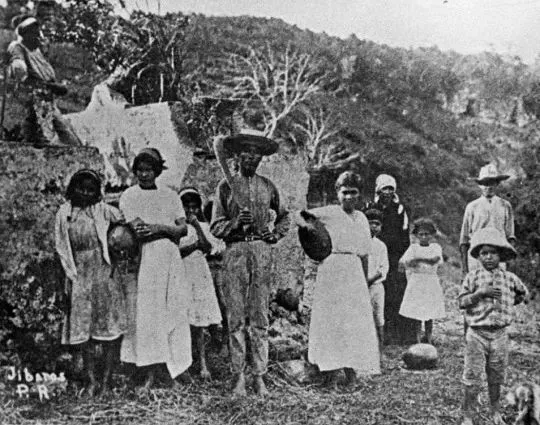
Puerto Rican gibarro attire (center hooded person)
Alberto Mielgo himself is none other than Spanish, and it's hard not to make the connection between these backgrounds and the expression of the work as a whole, so many analyses on the internet have read it as a story of colonial invasion and plunder of Latin America, rather than just a superficial fantasy story or a male vs. female issue.
The heart-shaped lake in the forest is the heart of Latin America, the banshees represent the indigenous people of the region, the gold and silver jewels on their bodies represent the rich resources, and the knights represent the Spanish colonists who came to the forest for their wealth and brought untold misery to the region as they plundered it. From the late 15th to the 19th century, much of Latin America was colonized by Spain, and huge quantities of gold and silver were shipped to Europe, a plunder that still has far-reaching effects today.
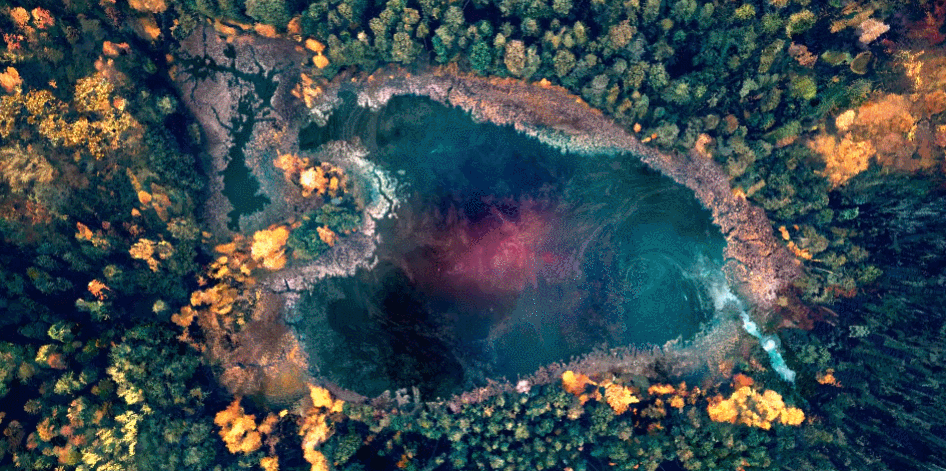
However, in an interview with Mediaawn on the day of the film's release Mielgo stated that the film is actually a metaphor about love relationships and referenced the first season's entry, Witness, as
"Witness is like one of those relationships that when you get into and then never end, you both try to communicate but neither actually listens to the other, so it's like a cycle. Whereas "Jibaro" explores an extremely toxic relationship, a relationship between predators that is sensual because it's based on being attracted to each other for the wrong reasons. The Banshee assumes that the knight is not a man who lusts after foreign objects, when in fact the very beginning of the film shows that the knight is actually greedy for money as he begins a careful treasure hunt after finding gold pieces in the river; the knight has nothing but fear at the center of his escape, but also flirts with the Banshee after realizing that she means no harm to him, and in the end kills the Banshee in order to grab the jewels.
"These two people fell in love for the wrong reasons, which is a common situation in modern relationships. Two people choose each other for the wrong reasons and both end up miserable. Some people are lucky to be together from a very young age and grow old together, but most of us struggle to find our other half. I love exploring this topic because it is very personal. And when you talk about something personal, the audience understands it and can feel that it's real. "* Not all stories have to be about saving the world or a hero's journey and being able to show the main character how to become a better version of themselves. In this one, both men end up worse off and they don't learn any lessons, so to speak, and both men lose. Honestly, I love movies that leave something lacking.
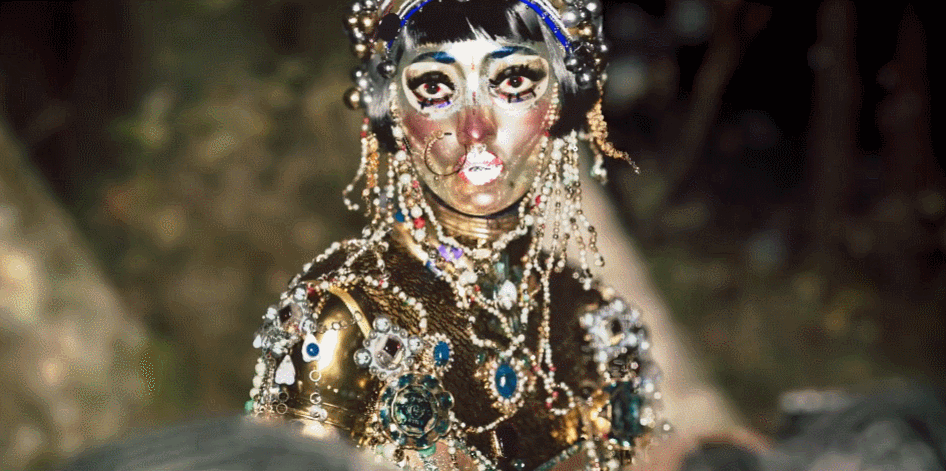
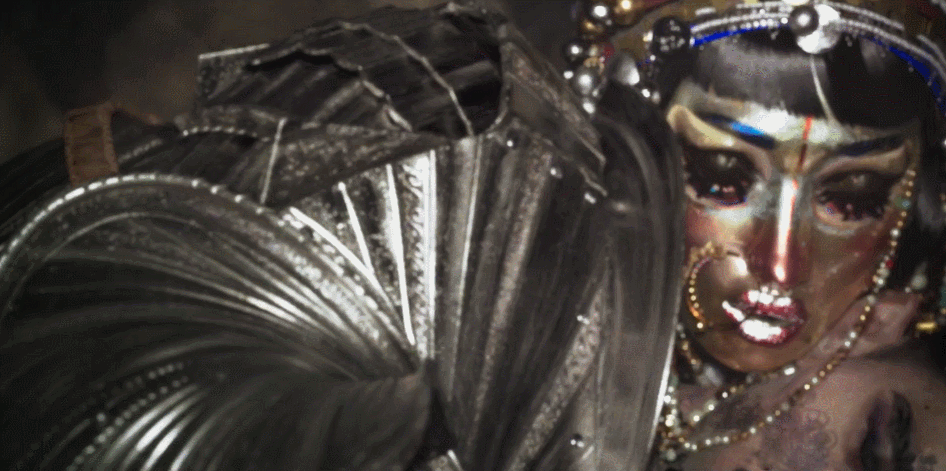
If, as Mielgo suggests, then "Jibaro" and "Witness" and "All for Love" are also metaphors or expressions of love relationships, but that doesn't detract from the viewer's own understanding of the film.
In one interview, Mielgo stated that the film is "sort of abstract" and therefore "hopefully people will also have their own opinions and conclusions". And the fact that such a ten-minute animated short has spawned such diverse interpretations is a testament to the substance and depth of the work itself, "Jibaro".
Alberto Mielgo
Alberto Mirgo
Alberto Mielgo has been known as a pioneer in the animation world, coming from a background as an oil painter who later went into digital art and also parted ways with Sony during his time as art director of the animated film Spider-Man: Parallel Universe over differences in the art style of his work.
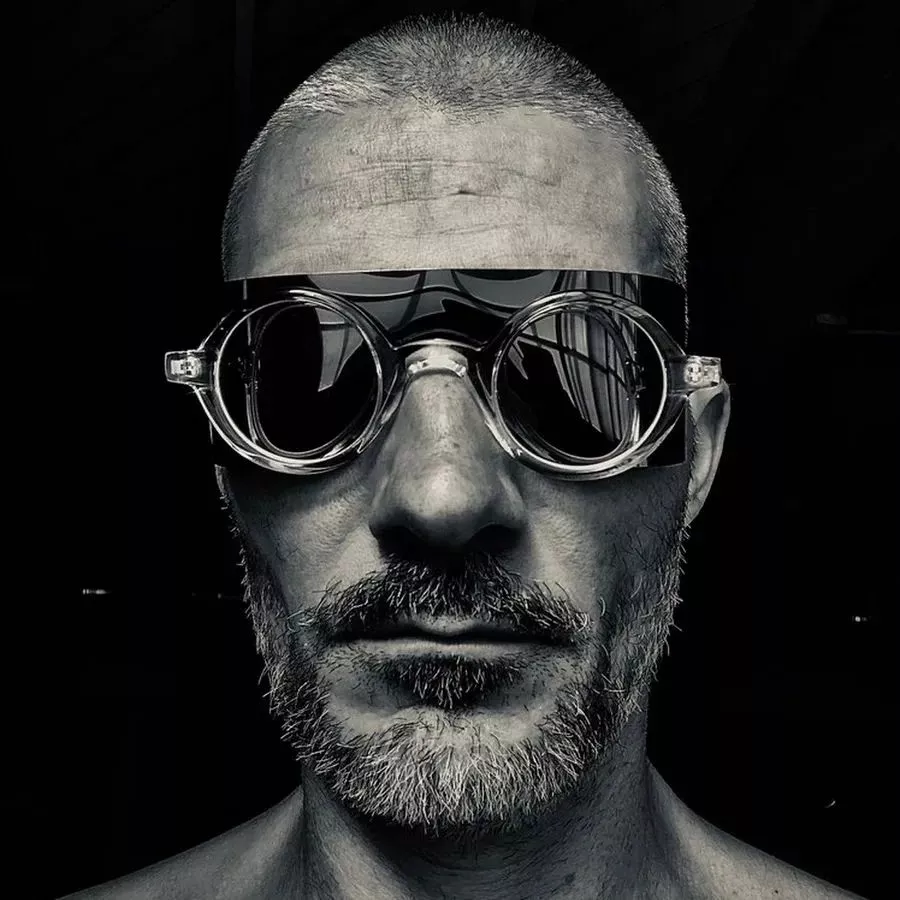
©Alberto Mielgo
Since Witness, Mielgo has been on a path to become a completely dominant animation director in his own right, and each subsequent film has been very personal and hugely influential, even the promotional video made for Watch Dogs: Legion.
Game Watch Dogs: Legion CG Promo
But Mielgo doesn't see his work as experimental, and in response to a question from slashfilm about "where the future of animation is headed", he gave a brilliant answer.
"Beyond, it's just only that. It doesn't need to be a technical breakthrough simply for the sake of it, and I don't think my stuff is experimental, it just makes the technology and art work for the story, and that's what's most important to me. As for the future of animation ...... The fact is, we've had adult animation for a long time. I don't know if you understand, but animation was originally created to please adults, and like Tex Avery's (Tex Avery, animator of the Golden Age of American animation) stuff, it was very crude. Mickey Mouse was a rough character in the beginning, but then we had a very established and successful paradigm with Disney, Pixar, etc. That paradigm was successful and is still successful today, but it also led many people to think that animation was only for family-friendly.
So I'm hoping that we - the Love, Death & Robots series - can make adult animation mainstream as well. I analyze this as something that can work because one, people like it, and two, we're a generation that really grew up with comic books, animation and graphics technology, and it worked well before that because we chose the right partners. We don't try to please an all-ages audience, we just try to please the people who like our stuff. So I hope the future of animation will allow us to continue like this.